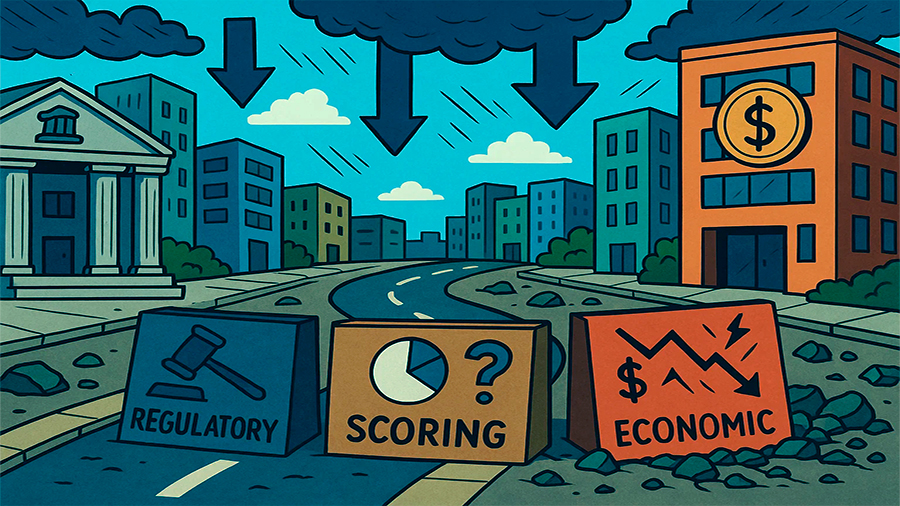Emerging markets are rapidly becoming fertile grounds for lending expansion, fueled by increasing economic activity, rising incomes, and technological adoption. For financial institutions, these markets represent enormous potential, driven by a young, tech-savvy population and improving financial literacy. Yet, navigating lending growth in these regions is not without substantial hurdles, including regulatory complexities, inadequate credit data, and economic volatility. Understanding both the lucrative opportunities and inherent challenges is essential for lenders aiming to tap into these dynamic markets while managing their risks and maximizing profitability effectively.
Why Lending is Expanding Rapidly in Emerging Markets
The surge in lending activities across emerging markets stems primarily from significant economic growth, increased urbanization, and enhanced financial inclusion. Many of these economies have shown impressive GDP growth rates, such as India averaging 7% annually in the last decade, and sub-Saharan Africa sustaining around 4% growth. Rising income levels in these regions encourage more borrowing as consumers seek improved living standards. Additionally, advancements in mobile technology and digital banking platforms have opened financial services to previously unbanked populations, significantly broadening the market for lenders. This digital revolution enables banks and fintech companies to provide small, convenient loans, substantially increasing loan penetration rates.
The Role of Technology in Driving Lending Growth
Technological advancements in emerging markets are crucial to the rapid increase in lending. Mobile banking solutions and fintech innovations offer cost-effective ways to reach underserved populations. In countries like Kenya, where mobile penetration exceeds 90%, digital payment platforms have made loans accessible to millions. Similarly, fintech lenders in Latin America and Southeast Asia leverage data analytics and artificial intelligence to assess creditworthiness without traditional credit histories. This tech-driven approach significantly reduces operational costs, enabling financial providers to scale quickly and profitably across these expansive regions.
Financial Inclusion Accelerates Lending Demand
Financial inclusion has significantly boosted lending demand in emerging economies. According to the World Bank, approximately 1.2 billion adults gained access to financial services between 2011 and 2021, predominantly in emerging markets. This increased accessibility has dramatically raised the number of potential borrowers, especially among micro, small, and medium enterprises (MSMEs), which represent about 90% of businesses in these regions. Access to credit helps MSMEs invest, expand operations, and hire workers, contributing significantly to economic stability and job creation.

Key Opportunities for Lenders in Emerging Markets
Lenders operating in emerging markets encounter substantial opportunities primarily driven by underserved markets, favorable demographics, and government initiatives. Demographically, emerging markets feature younger populations, like in Africa, where approximately 60% of people are under 25. These young consumers eagerly adopt financial products, from mobile banking to personal and business loans, establishing lasting banking relationships. Government policies also support lending growth by providing guarantees, simplifying credit processes, and promoting regulatory frameworks favorable to foreign investors. Financial institutions entering these markets can strategically leverage these opportunities to expand their customer base and enhance profitability.
\
Microfinance as a Major Opportunity
Microfinance remains a highly profitable and socially impactful lending segment in emerging markets. Institutions like Grameen Bank in Bangladesh and Kiva globally have demonstrated that small loans can substantially improve economic outcomes for individuals and communities. Microloans enable entrepreneurs and low-income households to fund businesses, educational needs, and healthcare expenses. With typical repayment rates exceeding 95%, microfinance provides lenders stable returns while addressing social development goals.
Growth Potential in SME Lending
Small and Medium-sized Enterprises (SMEs) represent another significant opportunity. SMEs are major economic engines in emerging economies, accounting for over 40% of GDP and creating more than 70% of jobs in regions such as Latin America and Southeast Asia. Despite this substantial contribution, SMEs often face severe credit constraints. Banks and fintech providers targeting this underserved sector with tailored credit products—like invoice financing, working capital loans, and digital lending—can significantly boost lending portfolios while driving economic growth and job creation in these markets.

Challenges Facing Lending Expansion in Emerging Markets
Despite significant opportunities, lending expansion in emerging markets encounters several critical challenges, including weak regulatory frameworks, inadequate credit reporting systems, and economic volatility. Regulatory uncertainty poses substantial risks for lenders, potentially leading to unpredictable policy changes or restrictive lending caps. Furthermore, credit scoring and reporting systems are frequently underdeveloped, making risk assessment difficult and heightening default risks. Economic volatility—including currency fluctuations, inflation, and political instability—also impacts loan repayment rates and lender profitability. Financial institutions must carefully manage these factors through effective risk assessment, robust credit scoring methodologies, and strategic diversification.
Regulatory Complexities and Uncertainty
Emerging markets often suffer from inconsistent regulatory landscapes, complicating lending processes. In regions like Sub-Saharan Africa or South America, lenders frequently navigate unclear policies and inconsistent enforcement. For example, abrupt regulatory shifts, such as interest rate caps or foreign investment restrictions, can abruptly impact lenders’ profitability and operational stability. Effective mitigation involves proactive engagement with regulatory authorities, detailed market research, and developing adaptive business strategies to minimize potential disruptions.
Challenges in Credit Assessment and Data Reliability
Reliable credit data is typically sparse or unavailable in emerging markets. Many individuals and SMEs lack formal credit histories, complicating traditional credit assessment methods. This absence of reliable data increases risks associated with defaults and loan losses. Innovative lenders overcome these barriers by adopting alternative scoring methods, such as leveraging mobile payment histories, social media activity, and other behavioral data points to build accurate predictive models. Investing in advanced analytics and machine learning technology becomes essential for accurate credit assessment and profitable lending.
Managing Economic Volatility and Default Risks
Economic volatility represents another significant challenge. Emerging markets experience higher levels of inflation, currency devaluation, and political instability compared to developed economies. In countries like Argentina, annual inflation rates frequently exceed 40%, drastically affecting borrowers’ repayment capacities. To manage these risks, financial institutions often implement rigorous stress-testing, diversify loan portfolios across different sectors and regions, and offer loans indexed to stable currencies or asset-backed collateral. These strategies enhance lenders’ resilience and protect their balance sheets amid volatile economic conditions.
The Conclusion
Expanding lending activities in emerging markets offers substantial growth opportunities through technological innovation, financial inclusion, and targeted SME lending. Nevertheless, lenders must navigate significant challenges, including regulatory uncertainties, credit data limitations, and economic instability. Financial institutions that successfully balance these factors—leveraging advanced technology, sophisticated risk assessment models, and strategic market insights—stand to reap significant rewards from participating in these rapidly evolving, high-potential markets. By proactively addressing these complexities, lenders can sustainably grow their operations while contributing to economic development across emerging economies.

